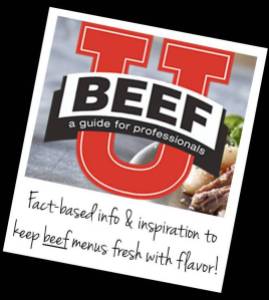 Written by Chaley Harney, Executive Director, Montana Beef Council
Written by Chaley Harney, Executive Director, Montana Beef Council
As the new fiscal year kicks off for the Beef Checkoff and the Montana Beef Council, we will embark on another year of beef promotion, research and education that is intertwined with the changing consumer marketplace and industry realities.
According to the most recently available demand indices tracked by Dr. Glynn Tonsor, associate professor of livestock marketing, Kansas State University, he suggests retail demand was stronger in the second quarter of 2013 than experiences in 2012. This continues a three-year trend of overall beef demand strength which has added important support to cattle prices throughout the industry. (As of October 9th, it remains unknown when updated values will be available given data necessary for demand index calculations remains currently unavailable.)
Tonsor, along with Dr. Ted Schroeder, professor of livestock marketing, Kansas State University and Dr. James Mintert, assistant director of Extension for Agriculture and Natural Resources at Purdue University, they authored the Beef Demand Determinant Study to identify the beef demand drivers in which the Checkoff programs should focus to have the most compelling effects on beef demand moving forward. (To view the full report visit MyBeefCheckoff.com). The key findings of the study identified seven broad beef product attributes as potentially salient demand factors that the beef industry may be able to influence and were the central focus of the study. Beef price; food safety; product quality; health; nutrition; social aspects; and sustainability were respectively identified as those key areas.
Although price is not an influential area for the Checkoff, it does have a high impact on consumers. The remaining areas are influential and these findings have helped refine the approach that the Beef Checkoff will take for future programs and ultimately serve to continually improve the ways that beef promotion, education and research are carried out.
Most notably on the national level, a new strategic promotion and advertising plan of work has been deployed that will integrate digital media everywhere possible and traditional media, namely print and radio, will be phased out. This new strategy is the proper course of action that targets the Millennial Generation (those born between 1980-2000) and specifically the older Millennials. The Millennial Generation is over 80 million strong in the U.S., and even though this number is close to the Baby Boomers, the Millennial Generation is unique in the fact that they are “building their life resume” every chance they get. They take the opportunity to share information about their daily lives, both in and out of the workplace, which then extends to their community… All online. The Baby Boomers have essentially stopped growing their families and their food spending is declining. However, the older Millennials are growing their families and their food spending is increasing. Millennials also tend to maintain close relationships with their Baby Boomer parents, offering yet another avenue for extended influence. The culmination of these factors and others are the reasons why the Beef Checkoff will engage and influence the target audience and continue to build beef demand.
On the state level, the Montana Beef Council Board of Directors reviewed project proposals from a variety of organizations from all across the state. The 2014 marketing plan includes many strong programs and incorporates new opportunities to engage, influence, educate and promote beef to Montana consumers. As a producer, you can expect to see beef promotion and digital media integration with the Montana State University Bobcats, in retail stores across the state, as well as with foodservice operators. Further steps will also be taken to build on the success of the Pasture to Plate Dietetic Intern Tour by hosting another tour as well as seeking influential participants for an additional Pasture to Plate Tour. Many of the new strategies incorporated in national and state efforts seek to target ‘influencers’ with positive messages about beef and beef production. Influencers, in this context, are those that advise or offer advice to others in health, dietary and lifestyle choices. For instance, health, nutrition and fitness professionals, chefs, restaurateurs, bloggers and foodies.
These are just some of the strategies that will be activated in this new fiscal year. For more information, stop by the office, call us, check us out on Facebook, Twitter, Pinterest or visit our website at MontanaBeefCouncil.org. And to see more of the great information available, visit MyBeefCheckoff.com, BeefItsWhatsForDinner.com and FactsAboutBeef.com.

Programs with the Montana Beef Council are brought to you by the Montana Beef Producers and Checkoff Dollars.
**This article was originally published in the October 25, 2013 edition of Montana Stockgrowers Update.







